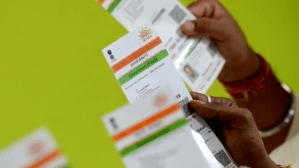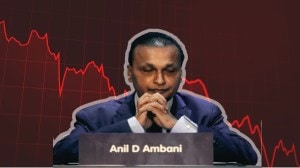
Lok Sabha
Stay updated with all the latest news and developments from the Lok Sabha right here. From legislative debates, key bills, and policy changes to insights into committee discussions and election updates, we bring you comprehensive coverage of everything happening in India’s lower house of Parliament. Whether it’s about important decisions, the actions of political leaders, or pivotal parliamentary sessions, our platform is your go-to source for reliable, up-to-date information on the Lok Sabha. Follow us for real-time updates on how India’s democracy is shaped and impacted by the nation’s lawmakers.
The Lok Sabha, often referred to as the “House of the People,” is the lower house of India’s Parliament. It plays a central role in India’s legislative process and is a key part of the nation’s democratic structure.
The Lok Sabha was shifted to the new Parliament building in New Delhi on 19 September, 2024. The new Parliament building is situated on Rafi Marg, right across the Central Vista, and is encircled by key landmarks including the Old Parliament House, Vijay Chowk, India Gate, the National War Memorial, Vice President’s Enclave, Hyderabad House, Secretariat Building, and the Prime Minister’s Office and residence.
Key Aspects of the Lok Sabha:
1. Structure and Composition:
- The Lok Sabha is composed of members directly elected by the citizens of India.
- The house can have a maximum of 552 members, with 530 representing states, 20 representing Union Territories, and two nominated members from the Anglo-Indian community (though this provision has been discontinued since 2020).
- Members of the Lok Sabha are elected every five years in a general election, unless dissolved earlier.
2. Functions and Powers:
- Legislative Functions: The Lok Sabha, along with the Rajya Sabha (upper house), is responsible for enacting laws in India. A bill must be passed by both houses before it becomes a law.
- Financial Powers: The Lok Sabha holds significant control over financial matters, as it is the only house that can introduce Money Bills. The Rajya Sabha can suggest changes but cannot reject or amend Money Bills passed by the Lok Sabha.
- Control over the Executive: The Prime Minister and the Council of Ministers are accountable to the Lok Sabha. The government must maintain the confidence of the majority of Lok Sabha members. If it loses a vote of confidence, it must resign.
- Constituent Functions: The Lok Sabha plays a role in amending the Constitution. Amendments to the Constitution must be passed by both houses with a special majority.
- Electoral Functions: Lok Sabha members participate in the election of the President and Vice President of India.
3. Role of the Speaker:
- The Speaker, elected by Lok Sabha members, is the presiding officer and has considerable powers to maintain order and conduct proceedings. The Speaker’s role includes interpreting parliamentary rules, protecting the rights of members, and ensuring the smooth functioning of the house.
- In the absence of the Speaker, the Deputy Speaker presides over the house.
4. Legislative Procedure:
- Bills and Debates: Bills can be introduced by either government ministers (Government Bills) or private members (Private Members’ Bills). The bill goes through several stages, including readings, debates, committee reviews, and voting.
- Question Hour: The first hour of every Lok Sabha session is dedicated to Question Hour, allowing members to question ministers on various government activities and policies.
- Zero Hour: Following Question Hour, members can raise urgent matters that are not scheduled on the day’s agenda.
- Committee System: The Lok Sabha has several standing and ad-hoc committees, such as the Public Accounts Committee and the Estimates Committee, to ensure detailed examination of issues and government functioning.
5. Role in Federalism and Democracy:
- As a body that represents the people, the Lok Sabha plays a key role in expressing public opinion and addressing national issues. The representatives bring regional and national concerns to the forefront, fostering accountability and transparency.
6. Term and Dissolution:
- The Lok Sabha’s term is five years, after which elections are held. The President of India can dissolve the Lok Sabha if the government loses confidence, leading to early elections.
The Lok Sabha serves as a powerful legislative body in India, reflecting the democratic values of the country and acting as a bridge between the government and the people. Its powers and responsibilities ensure that India’s democracy remains robust, transparent, and responsive to the needs and aspirations of its citizens.
Stay informed about the latest developments concerning the Indian Army right here. From strategic initiatives and defense procurements to operational updates and personnel movements, we provide comprehensive coverage of all aspects related to the Indian Army. Whether it’s advancements in military technology, updates on border security, or insights into training exercises, our platform ensures you have access to timely and accurate information. Keep abreast of the Indian Army’s endeavors and achievements with our dedicated news updates.
Read More
Related News























